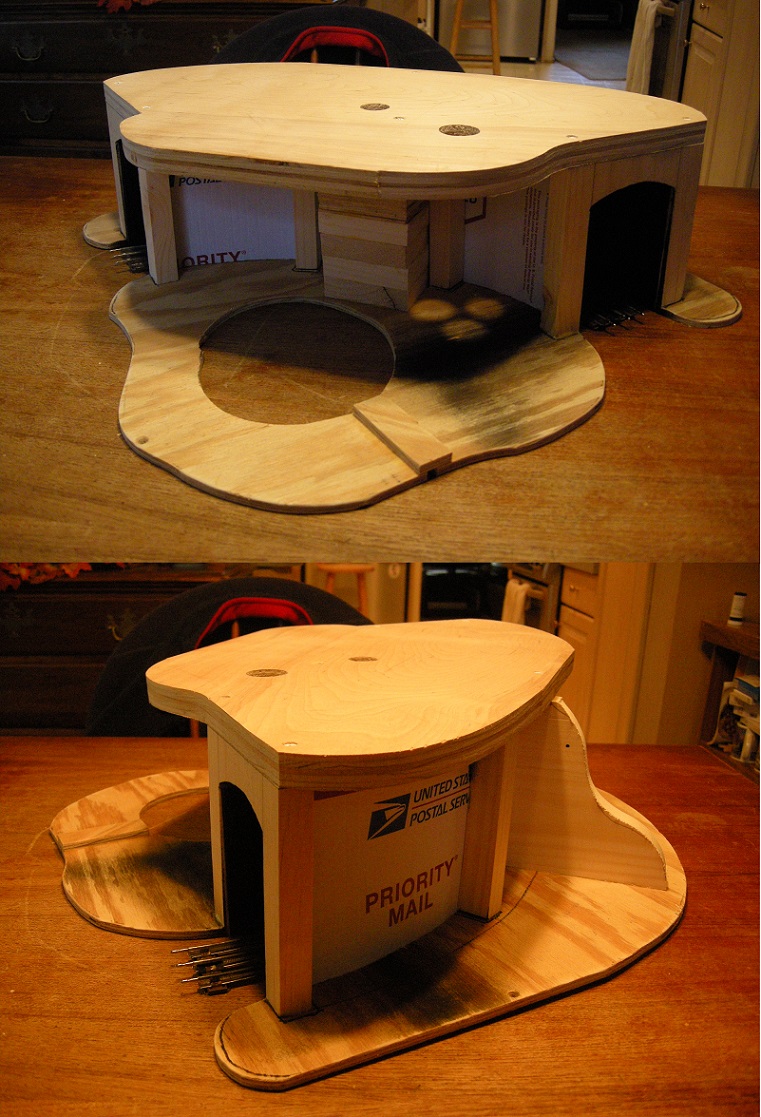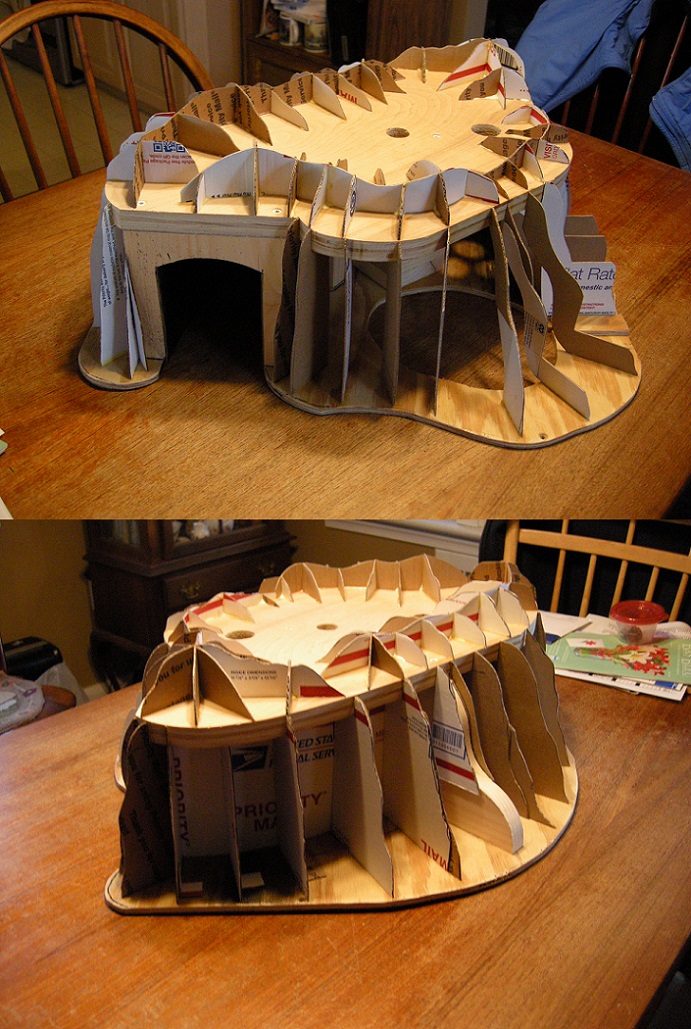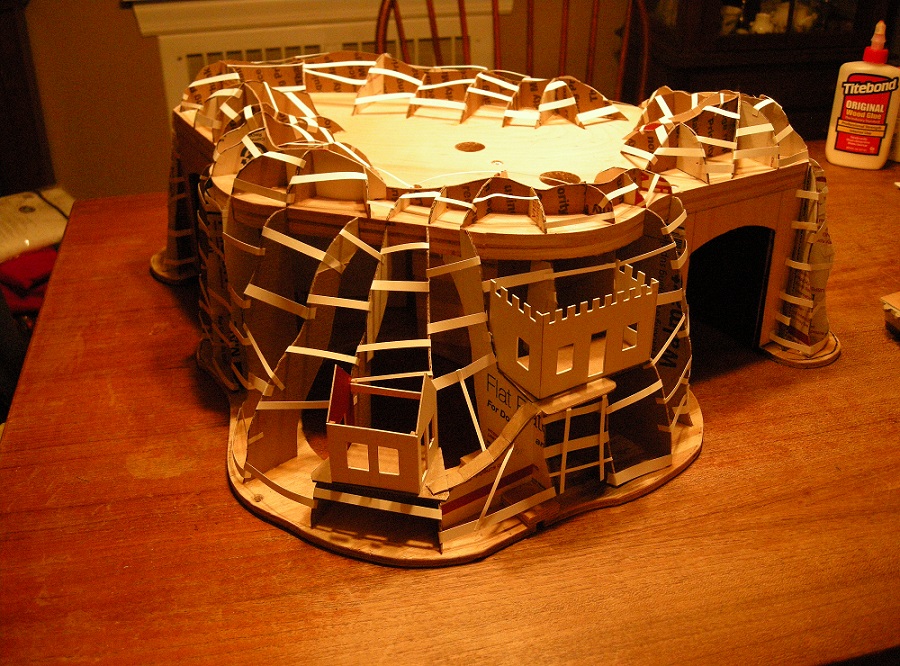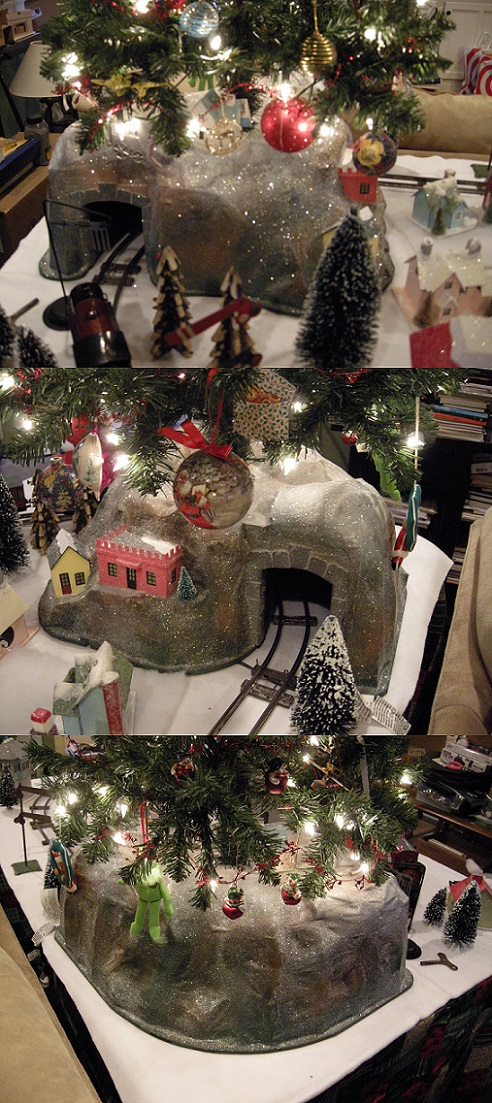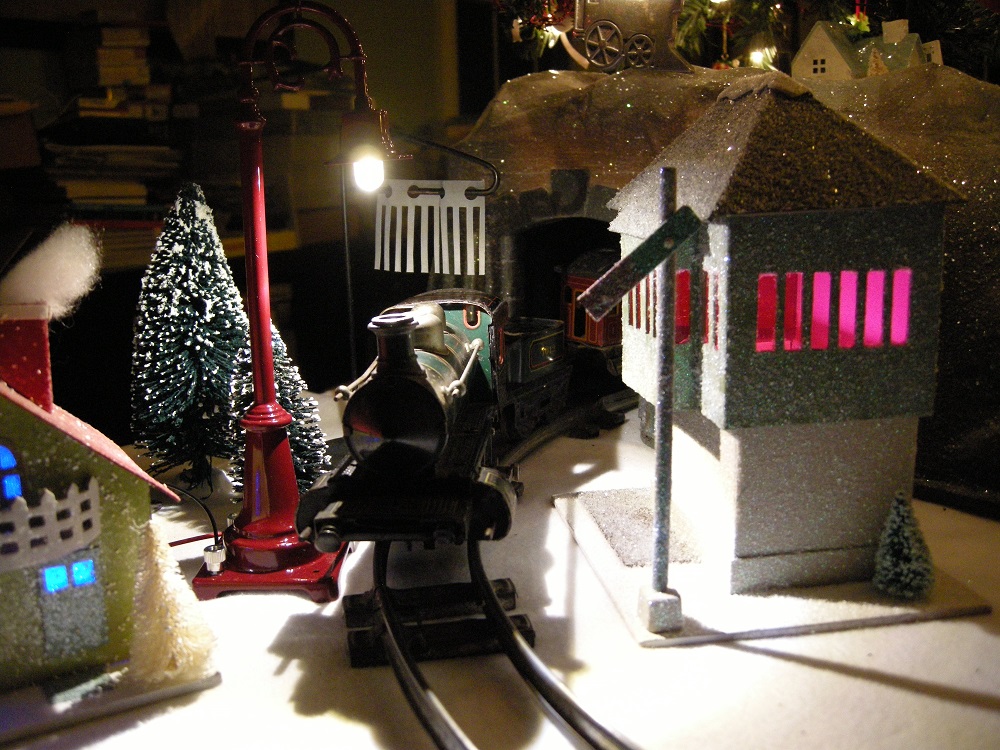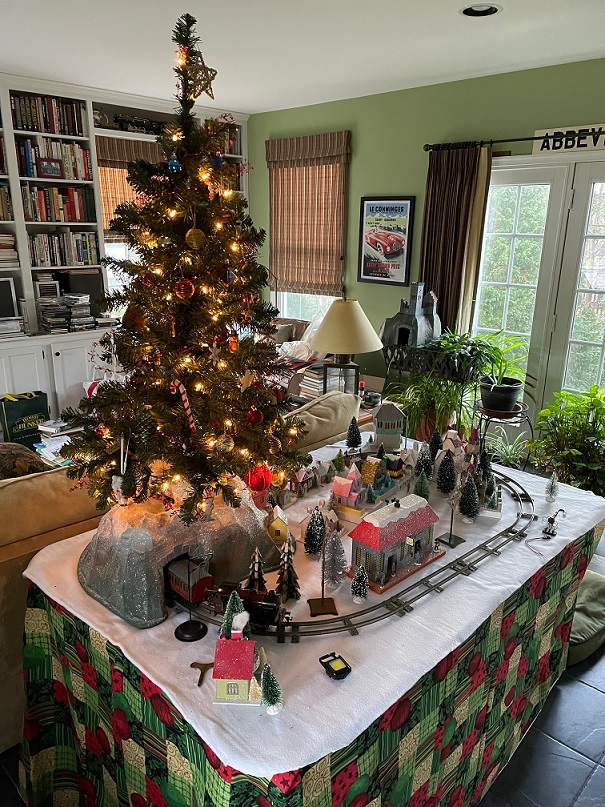Okay, once absolutely dry, I was ready to paint. Before I go on, I want to mention the beauty of knowing it all gets doused in glitter at the end...glitter goes a very long way towards covering up all of the imperfections of the finish. The painting process would be in two steps: (1) the overall "mountain", and (2) the detailing of the cardboard houses and the tunnel portals.
For the overall mountain, I used a few cans of flat or satin spray paint in green, tan, brown, gray, and white. I started with green around the base, than a mottling of green/brown/tan/gray going up the hillside. The top third of the slope and the entire top I sprayed white, going for a snow-capped mountain effect. There was some overspray on the building walls and tunnel portals, but no worries as I knew I was going to hand-paint anyway. I gave the stone portal masonry a brush with some medium gray acrylic craft paint I "borrowed" from the wife's stash, leaving the joints a lighter color for contrast:

The last thing I had to do in painting was to detail the buildings. They looked a bit drab, if I'm honest, so I tried think of things to dress them up. The one with the crenulated roof line, I added a strip of basswood around the top to look like a cornice or ledge, then a small portico over the front door. I used a few strips to paper the corners so the but-joints wouldn't show. I then gave it a couple coats of salmon-colored craft paint (same source), followed by more paper corners and a couple coats of yellow for the smaller peaked-roof house.
One of the neat things about the the prewar Lionel tunnels was that some included both interior lights and small buildings on the exterior. There was a hole in the felt or the sheet-metal that allowed s a bit of the interior light to shine through, illuminating the windows of the small buildings. It's a neat effect if you're lucky enough to have seen one. I attempted to replicate the effect here by leaving an opening behind each building and putting translucent vellum paper in the windows. The mistake I made was not leaving easy access to the interior for an interior light. A string of mini-lights/LEDs would work, with the battery box on the outside to turn on/off. But I digress.
I've gotten pretty good at using MS Excel to print windows; the problem has been finding a good print medium. I've tried a number of different sheet-plastics and papers for printing, but vellum paper seems to work the best. It's printable, it's translucent, and it's reasonably durable. I printed a couple sets along with doors, cemented them in, than made a roof for each building. Since this is a Christmas themed project, I added some "snow" effects.
The last thing to do was to slather the whole thing with glitter. I have found a nice course, highly-reflective, white glitter seems to work best. I painted the entire tunnel structure with Mod Podge, then sprinkled it liberally with glitter. After a few minutes, I dumped off the excess, then sprinkled it all back on again. This I left to dry for a few hours. Once dry, I dumped off any remaining excess, brushed it lightly to knock off any loose bits, then called it done:
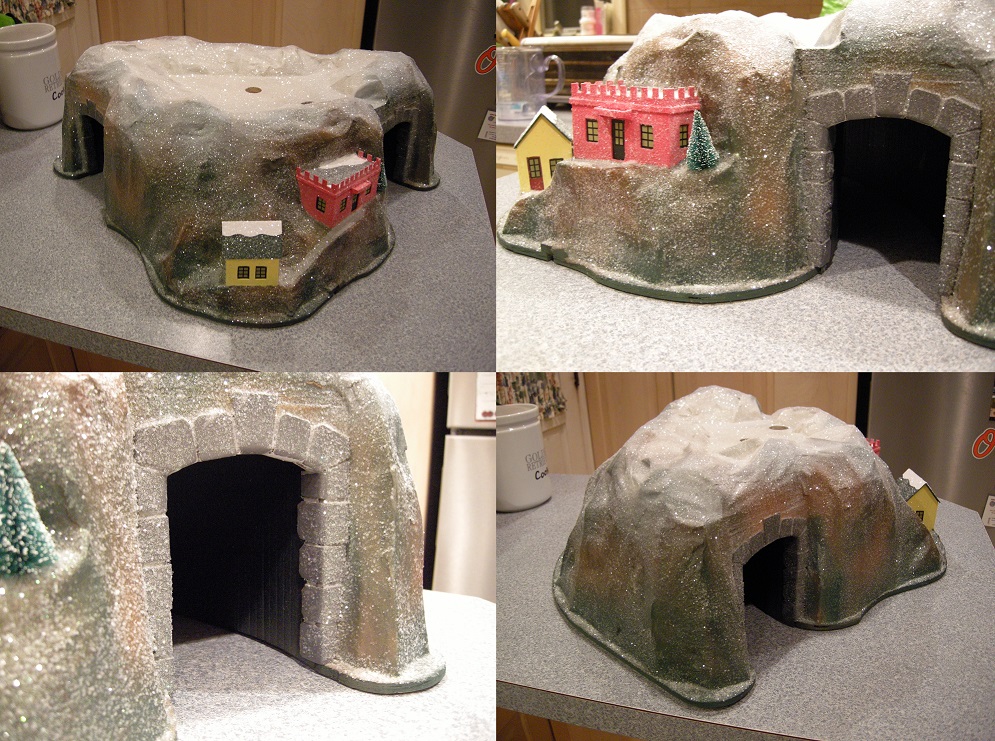
You let that dry for a few days, then it's ready for the display.
|


